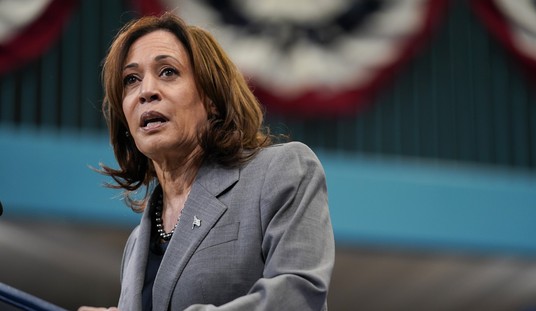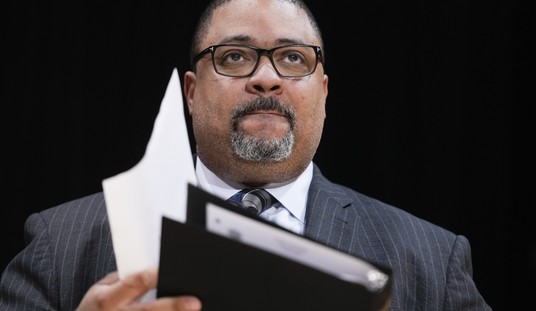Last year, we were proud to be one of the first websites to publicly promote the Republican Study Committee’s Cut, Cap and Balance (CCB) plan. What started out as an idea hatched by a few principled conservatives grew into a unifying rallying cry for the entire conservative movement. Sadly, GOP leadership jettisoned the universally-heralded CCB plan in favor of the Budget [Out of] Control Act, which gave Obama another $2.1 trillion in debt authority, while cutting nothing significantly except for defense.
Now, thanks to the indefatigable work of Reps. Jim Jordan, Scott Garrett, Mick Mulvaney, Tom McClintock, and Tim Huelskamp, CCB is back in the form of the annual RSC budget – and it’s here to stay. The RSC budget – Cut, Cap, and Balance – immediately cuts discretionary spending in FY 2013 by $112 billion from last year’s spending levels, caps future spending at 18-18.7% of GDP, and balances the budget in just 5 years! Overall, the RSC budget will cut $7.6 trillion relative to Obama’s budget and even $2.3 trillion more than the Ryan budget.
The amazing thing is that the balanced budget is achieved without accounting for the reforms to the biggest drivers of the deficits; Social Security and Medicare. The budget proposal includes Paul Ryan’s Medicare premium support plan, and even adds Social Security reform (unlike the Ryan budget). However, those changes don’t begin until after the 10-year budget frame. As such, none of the savings are included in the budget.
While it is clear that those two leviathans must be reformed in order to maintain a balanced budget in the long-run, this budget illustrates something unique in budget land. It is the first proposal that shows how to balance the budget in 5 years, even without reforming SS and Medicare immediately. This does not diminish the importance of reforming those programs; rather it shows how much dead wood is lodged into the rest of the budget – an observation that is often overlooked.
Here is a detailed breakdown of the budget proposal:
Discretionary Spending: This budget sets the FY 2013 discretionary spending cap at $931 billion,roughly equal to 2008 levels. That’s hardly too much to ask for. It takes the $1.028 trillion level established in the Ryan budget and bakes in the $97 billion of impending sequester cuts (slated to begin on January 2) into the budget from the beginning of the year. Specifically, it parries away the cuts from defense spending and directs it to the harmful, wasteful, and unconstitutional government programs and agencies. The list of programs that will be terminated includes the National Labor Relations Board, Trade Adjustment Assistance, the Presidential Campaign Fund, the Legal Services Corporation, the Corporation for Public Broadcasting, the Universal Service Fund, the Economic Development Agency, and the National Endowment for the Arts.
Here is the key point: All discretionary spending is frozen at the $931 billion level until the budget balances in FY 2017. From FY 2018-2022, growth of discretionary spending is capped to inflation. Moreover, in order to keep total discretionary spending at this level, while simultaneously providing for our national security needs, the sub-category of defense spending is allowed to rise gradually (the same levels as the Ryan budget), as non-defense discretionary spending actually declines every year until FY 2018. Overall, the RSC budget saves about $750 billion more in discretionary spending than the Ryan budget.
Medicaid and Welfare: The paramount entitlement reform of the budget is Medicaid reform. The proposal incorporates the recently-introduced State Health Flexibility Act (H.R. 4160), which combines Medicaid and SCHIP into one block grant to the states, allowing them to do with it whatever they deem prudent. Unlike the Ryan plan, this proposal would freeze the block grant at FY 2012 levels (in nominal dollars) for ten years. Overall, the RSC budget saves $760 billion more than the Ryan budget from Medicaid/CHIP proposal and over $2 trillion from the current baseline.
For other mandatory programs, the budget incorporates the RSC’s Welfare Reform Act of 2011 (H.R. 1167). Once unemployment dips below 6.5%, this bill would freeze all spending on the 77 means-tested programs at 2007 levels (pre-recession welfare payments), rising only with inflation. It would also place some budget constraints on these “mandatory” programs, and subject the Food Stamp program to the same work requirements that were placed on TANF under the 1996 welfare reform bill. Total savings from welfare reform will be $260 billion over 10 years.
Other reforms include:
- Requiring current federal workers to contribute more to their pensions and health benefits, while limiting the rate of growth of federal pensions to the “Chained-CPI.”
- Cutting agriculture subsidies by abolishing the Direct Payment farm subsidy, the Foreign Market Development Program, and the Market Access Program.
- Privatizing Freddie and Fannie
- Eliminating all mandatory spending for Pell Grants, subjecting 100% of price tag to the annual budget process.
Taxes: In addition to balancing the budget in 5 years, the RSC plan would also enact pro-growth tax reform, “The Jobs Through Growth Act,” aiming for the same revenue baseline as the Ryan budget. It would offer an optional transition to a new, flatter system that contains just two rates: 15% (first $50,000 taxable income for single filers, $100,000 for joint filers) and 25% (taxable income above that). In order to ensure that there is no increased burden on middle-income families with several children; couples would get a $25,000 standard deduction and an additional $12,500 deduction for each dependent. After this generous pro-family deduction, all other credits and deductions are eliminated, thereby putting an end to market distortions through the tax system.
The bill further calls for abolishing the death tax and AMT. The corporate tax would be lowered to 25% and transformed to a territorial system. Capital Gains taxes would be capped at 15% and indexed for inflation, so only the amount of gains beyond the level of inflation would be taxed. Some other tax proposals offer slightly bolder plans for the capgains and corporate taxes, but the beauty of this plan is that it facilitates a balanced budget, even working with the inaccurate static scoring of the CBO.
In conclusion, this budget offers the broad contours for any serious plan to balance the budget, and more importantly, shrink the size of government. On Thursday, the Cut, Cap, and Balance budget will be proposed as a floor amendment (H. Con. Res. 113) to the Ryan budget. This will be one of those votes that shows who is willing to substantiate their commitments to spending cuts and limited government with real action. It will also grant those who voted to kill CCB last year a second chance to right the ship.
Long live Cut Cap and Balance!















Join the conversation as a VIP Member